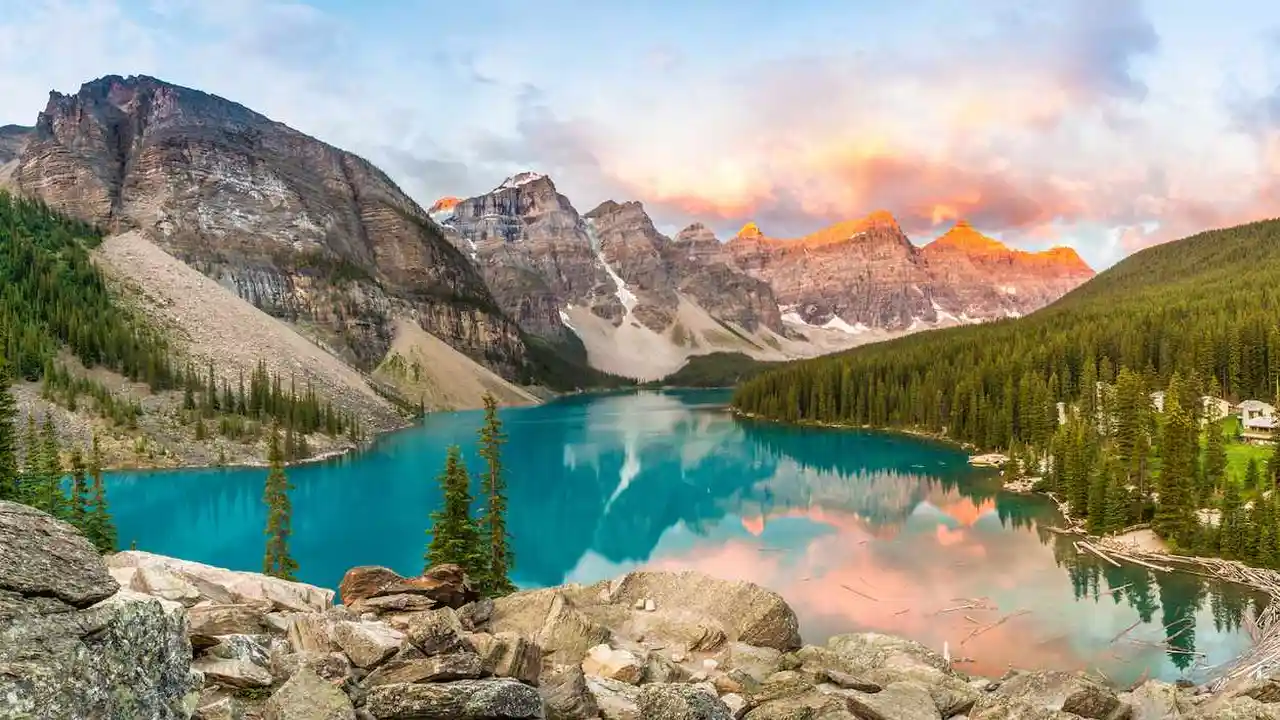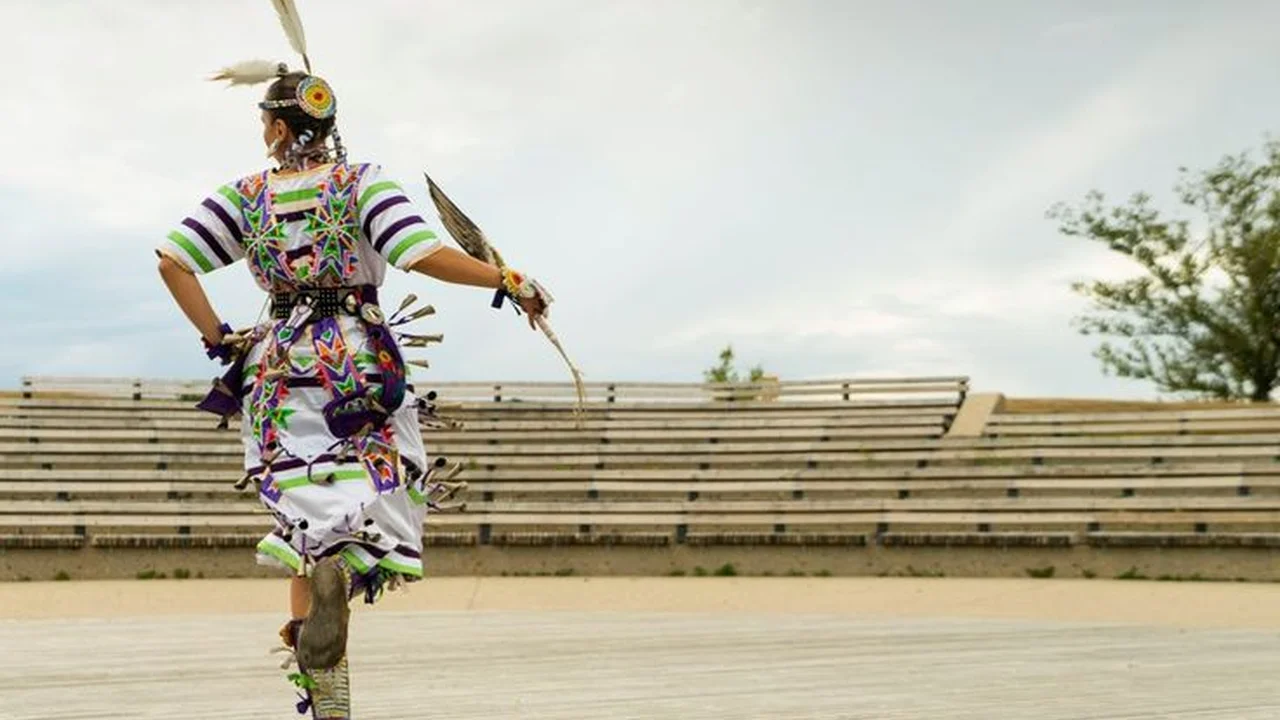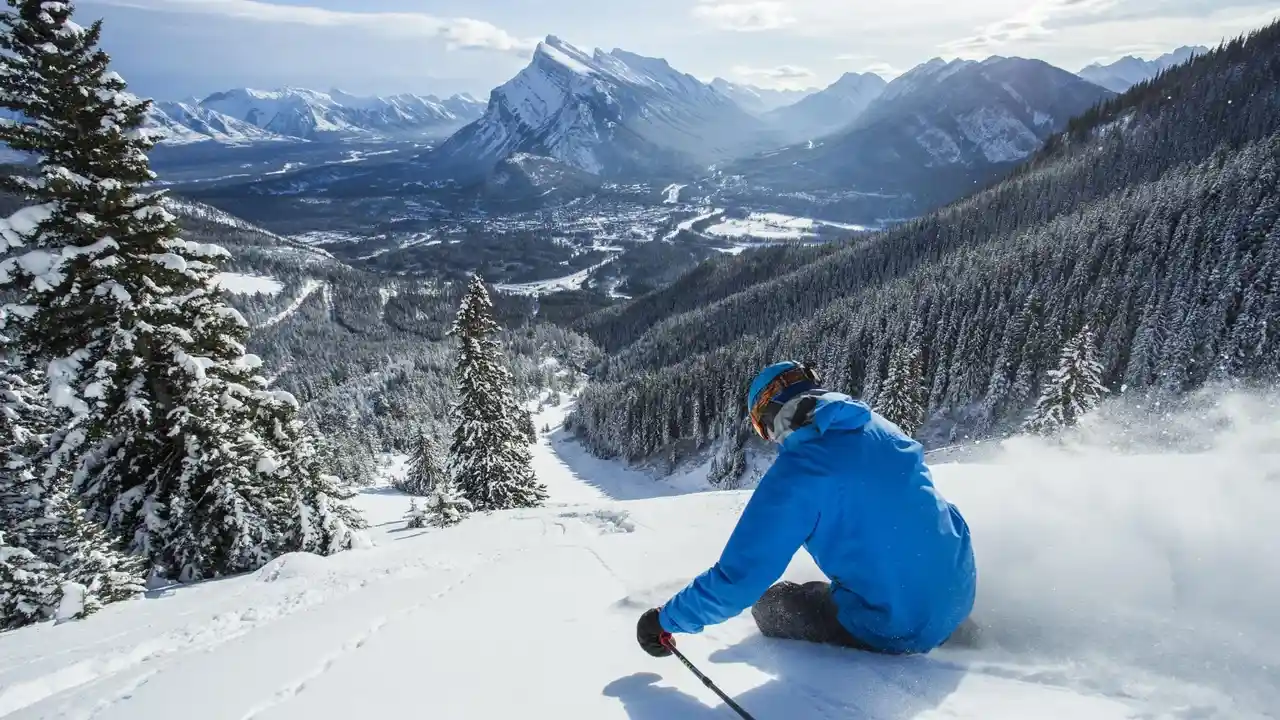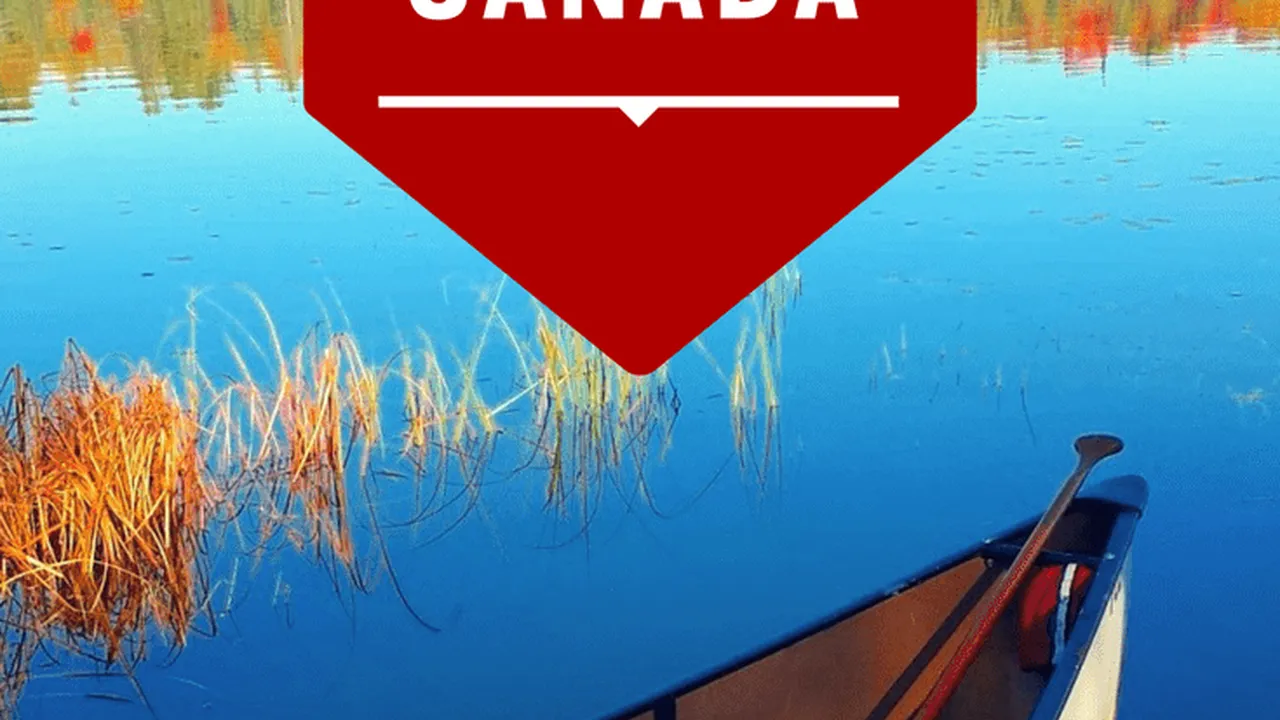Canada's National Parks: Which One is Right for You?

Canada is home to stunning National Parks This guide will help you choose the perfect one for your next adventure Compare landscapes activities and accessibility Discover your Canadian paradise
Exploring Canada's National Parks A Landscape Comparison for US Travelers
Hey there fellow adventurers! Planning a trip to Canada? Awesome choice! One of the biggest draws of the Great White North is its incredible National Park system. But with so many parks to choose from, how do you pick the *right* one for *you*? That’s what we're here to help you with. We're going to break down the landscapes, activities, and accessibility of some of the top parks, so you can make an informed decision and have the Canadian adventure of your dreams. Forget endless scrolling and confusing websites - let's dive in!
Banff National Park Alberta A Premier Destination for Hiking and Scenery
First up, we have the iconic Banff National Park in Alberta. This is probably what pops into your head when you think of the Canadian Rockies – towering snow-capped mountains, turquoise lakes, and lush evergreen forests. It's postcard-perfect, and for good reason.
Landscapes: Think dramatic mountain ranges, glaciers, alpine meadows, and stunning lakes like Lake Louise and Moraine Lake. Seriously, the color of the water in those lakes is unreal – you have to see it to believe it. It's like someone dumped a bucket of turquoise dye into the water.
Activities: Hiking is HUGE here. From easy strolls around the lakes to challenging multi-day treks, there’s something for every skill level. You can also go skiing and snowboarding in the winter, or try ice climbing if you're feeling particularly adventurous. Other popular activities include wildlife viewing (keep an eye out for elk, bears, and bighorn sheep!), gondola rides, and soaking in the Banff Upper Hot Springs.
Accessibility: Banff is super accessible, located just a short drive from Calgary International Airport. The town of Banff itself is well-developed with plenty of hotels, restaurants, and shops. You can easily rent a car or take a shuttle to get around. Note that during peak season (summer and winter holidays) it gets VERY crowded, so book your accommodations and activities well in advance.
Jasper National Park Alberta An Alternative for Nature and Wildife Viewing
Just north of Banff lies Jasper National Park, also in Alberta. While it shares some similarities with Banff (hello, Rockies!), Jasper has a more rugged and wild feel. It's less developed and less crowded, making it a great option if you're looking to escape the crowds.
Landscapes: Think vast wilderness, sprawling forests, and the stunning Athabasca Falls. Jasper is also home to Maligne Lake, one of the most photographed lakes in the Canadian Rockies. The scenery is breathtaking, with fewer crowds to obstruct your view.
Activities: Hiking is still a major draw, but Jasper offers more opportunities for backcountry camping and wilderness adventures. You can also go whitewater rafting, canoeing, kayaking, and fishing. Wildlife viewing is excellent here – keep an eye out for bears, wolves, caribou, and moose. Don't miss the Jasper SkyTram for panoramic views of the park.
Accessibility: Jasper is a bit more remote than Banff, but still relatively easy to access by car. The town of Jasper is smaller and quieter than Banff, with fewer amenities. However, you'll still find plenty of hotels, restaurants, and shops. It's a great option if you prefer a more laid-back and less touristy experience.
Pacific Rim National Park Reserve British Columbia Exploring Coastal Rainforests and Beaches
Okay, let’s switch gears completely and head west to British Columbia! Pacific Rim National Park Reserve is a completely different beast than Banff and Jasper. Here, you'll find lush coastal rainforests, rugged beaches, and the crashing waves of the Pacific Ocean.
Landscapes: Think ancient rainforests, sandy beaches, rocky shorelines, and dramatic cliffs. The park is divided into three sections: Long Beach, the Broken Group Islands, and the West Coast Trail. Long Beach is famous for its surfing and storm watching, while the Broken Group Islands offer incredible kayaking and wildlife viewing. The West Coast Trail is a challenging multi-day backpacking trip that takes you through some of the most stunning coastal scenery in the world.
Activities: Surfing, kayaking, hiking, beachcombing, and whale watching are all popular activities here. You can also visit the nearby towns of Tofino and Ucluelet, which offer excellent restaurants, shops, and art galleries.
Accessibility: Pacific Rim is accessible by car, but it's a bit of a drive from major cities like Vancouver. The towns of Tofino and Ucluelet offer a range of accommodations, from budget-friendly hostels to luxurious resorts. The West Coast Trail requires a permit and advance booking.
Gros Morne National Park Newfoundland & Labrador A Unique Geological Wonderland
Now, let's jump across the country to Newfoundland & Labrador and explore Gros Morne National Park. This park is a UNESCO World Heritage Site, known for its unique geological formations and stunning coastal scenery. It's unlike anything else you'll find in Canada.
Landscapes: Think fjords, mountains, bogs, and dramatic cliffs. Gros Morne is famous for its Tablelands, a barren landscape of orange-colored rock that looks like something from another planet. The park also boasts stunning coastal scenery, with charming fishing villages dotting the shoreline.
Activities: Hiking, boat tours, kayaking, and wildlife viewing are all popular activities here. You can hike to the top of Gros Morne Mountain for panoramic views of the park, or take a boat tour through Western Brook Pond, a stunning freshwater fjord. Keep an eye out for moose, caribou, and whales.
Accessibility: Gros Morne is accessible by car, but it's a bit of a drive from major cities. The towns of Rocky Harbour and Norris Point offer a range of accommodations. The best time to visit is during the summer months (June-September).
Choosing the Right Gear for Your National Park Adventure
No matter which park you choose, having the right gear is essential for a safe and enjoyable trip. Here are a few recommendations, with comparisons and pricing (approximate, of course!):
Hiking Boots
Recommendation: Salomon X Ultra 4 Mid GTX
Use Case: Versatile hiking boot suitable for a variety of terrain, from easy trails to moderate climbs. Waterproof and breathable, providing excellent comfort and support.
Comparison:
- Salomon X Ultra 4 Mid GTX ($165): Lightweight, agile, and waterproof. Great for day hikes and backpacking trips.
- Merrell Moab 2 Mid Waterproof ($135): Durable and comfortable, with excellent traction. A good budget-friendly option.
- Lowa Renegade GTX Mid ($230): Premium hiking boot with superior support and durability. Ideal for serious hikers and backpackers.
Backpacks
Recommendation: Osprey Atmos AG 65 (for men) / Aura AG 65 (for women)
Use Case: Comfortable and supportive backpacking pack for multi-day trips. Anti-Gravity suspension system provides excellent ventilation and weight distribution.
Comparison:
- Osprey Atmos/Aura AG 65 ($300): Premium backpacking pack with excellent comfort and features.
- Deuter Aircontact Lite 65+10 ($220): Durable and versatile backpacking pack with a comfortable suspension system.
- REI Co-op Flash 50 ($180): Lightweight and affordable backpacking pack. A good option for shorter trips and budget-conscious travelers.
Water Filters
Recommendation: Sawyer Squeeze Water Filter
Use Case: Lightweight and reliable water filter for purifying water from streams, lakes, and rivers. Essential for backcountry camping and hiking.
Comparison:
- Sawyer Squeeze Water Filter ($30): Lightweight, compact, and easy to use. A great option for backpacking and hiking.
- LifeStraw Personal Water Filter ($20): Simple and affordable water filter. Ideal for emergency situations and day hikes.
- Katadyn BeFree 1.0L Water Filter Bottle ($45): Convenient water filter bottle with a collapsible flask. Perfect for hiking and travel.
Bear Spray
Recommendation: Counter Assault Bear Deterrent
Use Case: Essential for safety in bear country. Should be carried and readily accessible when hiking in areas with bears.
Comparison:
- Counter Assault Bear Deterrent ($50): Industry standard bear spray with a long spray distance.
- UDAP Bear Deterrent ($55): Another popular bear spray option with a glow-in-the-dark safety clip.
Clothing
Layers are key! Even in summer, the weather in the Canadian Rockies can be unpredictable. Pack a waterproof jacket, fleece or down jacket, moisture-wicking base layers, and comfortable hiking pants. Don't forget a hat, gloves, and sunscreen!
Accessibility Considerations for All Travelers
Many Canadian National Parks are working to improve accessibility for visitors with disabilities. Check the specific park's website for information on accessible trails, facilities, and programs. Parks Canada also offers a "Companion Card" which provides free admission for a support person accompanying a visitor with a disability.
Making Your Choice A Summary Table for Quick Reference
To make things easier, here's a quick comparison table:
| Park | Landscape | Activities | Accessibility | Crowds |
|---|---|---|---|---|
| Banff | Mountains, Lakes, Glaciers | Hiking, Skiing, Wildlife Viewing | Very Accessible | High |
| Jasper | Vast Wilderness, Forests, Waterfalls | Hiking, Rafting, Wildlife Viewing | Accessible | Moderate |
| Pacific Rim | Rainforests, Beaches, Coastline | Surfing, Kayaking, Hiking | Accessible | Moderate |
| Gros Morne | Fjords, Mountains, Bogs | Hiking, Boat Tours, Wildlife Viewing | Less Accessible | Low |
So, there you have it! A breakdown of some of Canada's most amazing National Parks. Hopefully, this guide has helped you narrow down your choices and plan your perfect Canadian adventure. Happy travels!
:max_bytes(150000):strip_icc()/277019-baked-pork-chops-with-cream-of-mushroom-soup-DDMFS-beauty-4x3-BG-7505-5762b731cf30447d9cbbbbbf387beafa.jpg)






